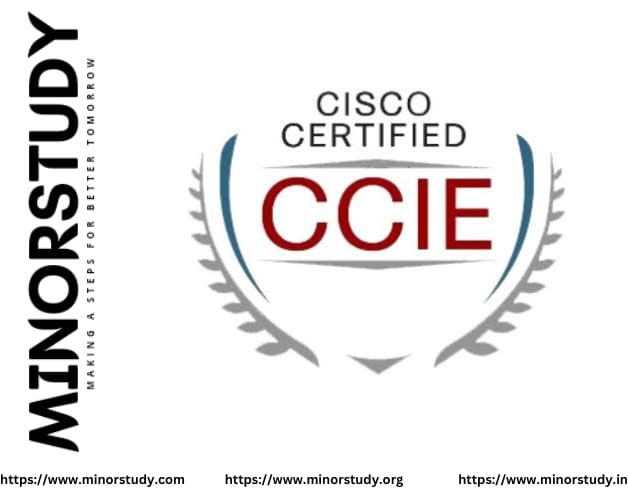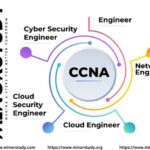CCIE: History, Facts, FAQs, and Its Importance in Modern Life
In the world of networking, the Cisco Certified Internetwork Expert (CCIE) stands as the pinnacle of professional achievement. Recognized globally as one of the most prestigious certifications, CCIE is a symbol of mastery in networking. Whether you are an aspiring network engineer, IT professional, or technology enthusiast, understanding the history, significance, and real-life impact of CCIE can be both inspiring and career-transformative.
This article covers CCIE in depth — including its history, facts, FAQs, timeline, societal relevance, practical daily-life impact, and reasons why it remains a coveted credential.
History of CCIE
The CCIE certification was introduced by Cisco Systems in 1993 to recognize the highest level of expertise in networking. Unlike entry-level or professional certifications like CCNA and CCNP, CCIE was designed for engineers who wanted to demonstrate their ability to design, implement, and troubleshoot complex network infrastructures.
Originally, the certification focused heavily on routing and switching. Over the years, CCIE has evolved to include multiple tracks: Enterprise Infrastructure, Enterprise Wireless, Security, Data Center, Service Provider, and Collaboration, reflecting the growing complexity and diversity of modern networks.
CCIE is renowned not only for its technical rigor but also for its emphasis on hands-on practical expertise, which sets it apart from many other certifications in the IT domain.
Facts About CCIE
Highest-Level Cisco Certification: CCIE is the ultimate validation of networking skills and is respected globally by organizations and peers alike.
Multiple Tracks: CCIE now offers specializations including Enterprise, Security, Collaboration, Data Center, and Service Provider, allowing professionals to focus on areas of interest.
Exam Structure: CCIE requires passing two challenging exams: a written exam to test theoretical knowledge, and a rigorous lab exam to demonstrate practical skills.
Hands-On Lab Exam: The lab exam is renowned for its difficulty, often lasting 8 hours, requiring candidates to configure complex networks and troubleshoot real-world scenarios.
Global Recognition: CCIE certification opens doors to senior-level network engineering roles and consulting positions worldwide.
No Formal Prerequisites: While prior networking knowledge (often CCNP-level) is recommended, there are no formal prerequisites, making determination and skill the ultimate requirement.
Validity: CCIE certification is valid for two years, after which recertification through exams or continuing education is required.
Elite Community: CCIE-certified professionals are part of a select global network of experts, often called the “CCIE club,” which carries high prestige.
High Earning Potential: Due to its difficulty and expertise level, CCIE-certified engineers are among the top-paid networking professionals worldwide.
Frequently Asked Questions (FAQs) About CCIE
Q1: How long does it take to achieve CCIE?
A: On average, preparation for CCIE can take 2–5 years, depending on prior experience, dedication, and study intensity.
Q2: Is CCIE still relevant in 2025?
A: Absolutely. With increasing reliance on advanced networks, cloud infrastructure, and cybersecurity, CCIE remains highly valuable.
Q3: What is the difference between CCNP and CCIE?
A: CCNP validates professional-level networking skills, while CCIE demonstrates expert-level mastery in designing, implementing, and troubleshooting complex networks.
Q4: Can I take CCIE exams online?
A: Written exams may be available online; however, the lab exam must currently be taken at authorized Cisco testing centers due to its hands-on nature.
Q5: What jobs are suitable after CCIE?
A: CCIE opens opportunities for Senior Network Engineer, Network Architect, Technical Consultant, Solutions Engineer, and IT Director roles.
Timeline of CCIE Evolution
1993: Cisco introduces CCIE to recognize expert-level networking engineers.
2000s: Expansion into multiple tracks including Security, Data Center, and Collaboration.
2010: Introduction of lab exam format to evaluate practical skills comprehensively.
2020: CCIE updates include cloud networking, automation, and SDN technologies.
2025: CCIE remains one of the most prestigious and challenging certifications in IT, recognized globally.
Significance of CCIE in Daily Life
Though CCIE may seem highly technical, its influence touches multiple aspects of modern life:
Network Reliability: CCIE-certified professionals ensure critical network infrastructures — in banks, hospitals, airports, and enterprises — operate without interruption.
Cybersecurity: Expertise in advanced networking helps prevent breaches and protects sensitive data, indirectly safeguarding individuals and organizations.
Innovation Enablement: CCIE experts design networks for cloud computing, IoT, and enterprise-level solutions, enabling technologies that simplify daily life and business operations.
Professional Growth: For individuals, CCIE represents the pinnacle of networking achievement, increasing career opportunities, professional credibility, and financial rewards.
Mentorship and Leadership: CCIE holders often guide junior engineers, contributing to skill development and knowledge sharing in society.
Observance and Societal Importance
While CCIE is not a cultural or religious observance, it has significant professional and societal importance:
Organizations celebrate CCIE achievers as benchmarks of technical excellence.
CCIE promotes continuous learning and innovation, contributing to the development of robust IT infrastructure.
The certification fosters a culture of technical mastery, which drives technological progress and supports societal reliance on networks and connectivity.
Wishing and Acknowledging CCIE Achievers
Recognizing CCIE achievers encourages motivation and inspires aspirants:
“Congratulations on achieving CCIE! Your expertise ensures the networks that power our modern world are secure and reliable.”
“Becoming CCIE-certified reflects determination, skill, and mastery — a remarkable accomplishment worth celebrating.”
Acknowledgment strengthens professional communities and encourages others to strive for excellence.
Key Points About CCIE
CCIE is Cisco’s expert-level networking certification.
Multiple tracks allow specialization in modern networking areas.
Combines theoretical knowledge with rigorous hands-on practical assessment.
Globally recognized, opening senior-level career opportunities.
Certification validity ensures professionals remain updated through recertification.
Supports cybersecurity, enterprise infrastructure, and technological innovation.
High earning potential and professional prestige make it a top-tier credential.
Enhances mentorship and leadership roles in IT communities.
Promotes a culture of continuous learning and technical excellence.
Conclusion: Daily Life Impacts and Societal Relevance
CCIE certification is more than a professional achievement; it is a symbol of expertise, dedication, and technical excellence. By equipping professionals with advanced networking knowledge, CCIE ensures critical infrastructures operate smoothly, data remains secure, and modern technologies continue to innovate.
For individuals, CCIE enhances career growth, credibility, and financial reward. For society, it fosters skilled professionals who maintain robust digital infrastructure, enabling seamless communication, secure transactions, and technological progress.
In a world increasingly reliant on advanced networking, CCIE-certified experts are the unsung heroes, ensuring connectivity, security, and innovation. Achieving CCIE reflects not just technical skill but a commitment to advancing society through reliable and innovative networks.








